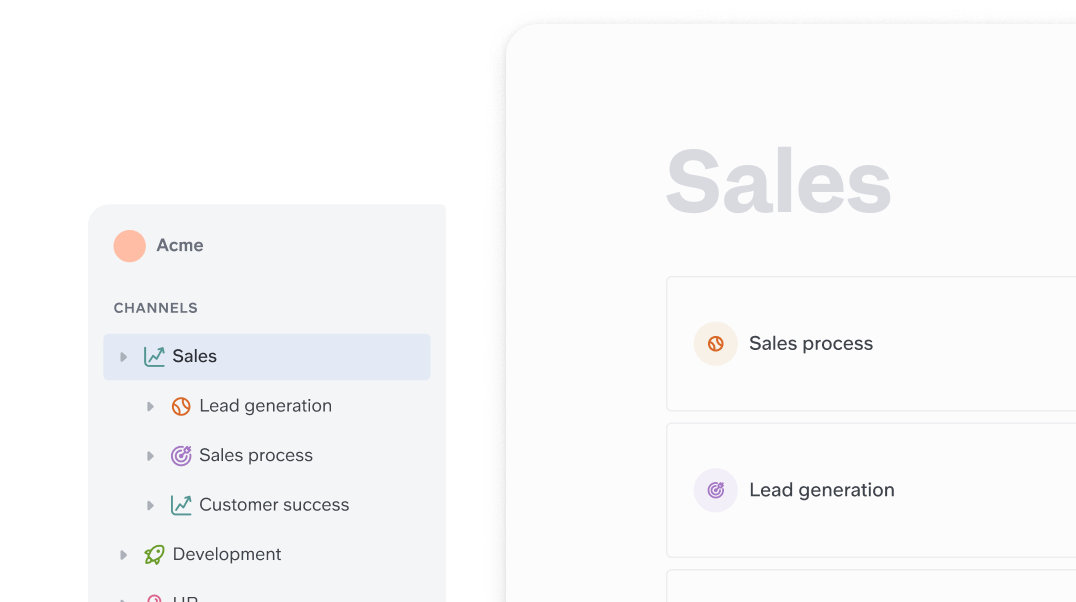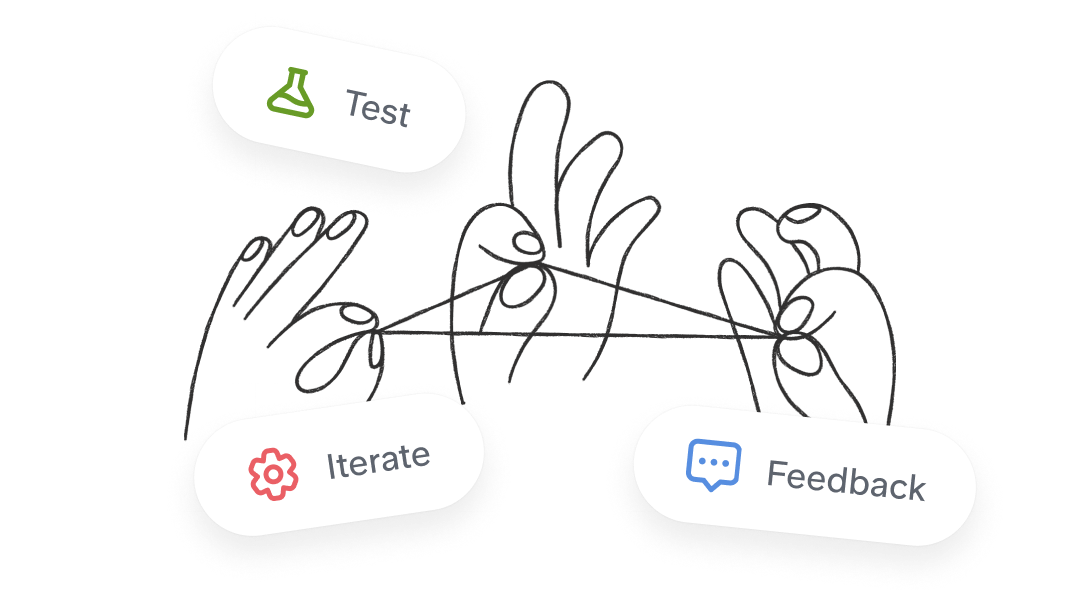Wiki generator
Let us help: a short chat with Slite AI and you’ll get an intuitive wiki tailored to your needs.
Start small
Get chatting
Tinker, browse, share, enjoy
Knowing who and what a wiki is for will help define its structure. Is it for a specific team? Or is it for the whole company? Knowing this from the get-go is what gets your knowledge base read.

Your organizational chart can define your wiki's layout! In fact, 80% of Slite users choose to organize their company wikis by department. These wikis are easy to understand and easy to navigate - especially if you’re looking for something within your own team or department.

The perfect choice for companies that want to break walls, shatter silos and unleash the power of information! It might take a while longer to set up, but it makes finding information easy and encourages cross-collaboration between teams and departments.

When you’re happy with what you’ve got, call in a few stakeholders to help test and perfect it. Remember: a great knowledge base is like a thriving community garden - if everybody puts something into it, everyone harvests the rewards. So: feedback, iterate, test, repeat!


What is Slite?
Slite is the AI-powered knowledge base that puts all the burdens of creating, managing and finding trusted company information on autopilot. Fast-growing teams can get instant access to their knowledge simply by asking questions - when and where they need it. Leveraging AI-suggested actions and powerful knowledge management features, Slite ensures that company knowledge stays relevant and always up-to-date, effortlessly. More than 200,000 companies rely on Slite as their single source of truth that the entire team can finally trust.
What is a knowledge base, and why is it important for businesses?
A knowledge base is a centralized place for all helpful data/information that your team/customers can refer to, whenever they have a question. It’s the culmination of all your company documentation. It’s highly important to have a solid knowledge base because it helps you cut down on meetings, and promotes a culture of self-retrieval of information. Information in a knowledge base is always available, is cost effective to maintain, and reduces turnaround time for questions by a high margin.
What are the key components or sections that should be included in a knowledge base?
A knowledge base, at its core, is a tool for understanding. The key components should mirror the way humans think and learn. First, have a clear introduction - what is this knowledge base for? Then, categorize the information logically, maybe mirroring the structure of the problem it solves. Always include examples - humans learn best from specific instances. And finally, FAQs or a troubleshooting section.
What types of content should I include in my knowledge base to make it effective?
The effectiveness of a knowledge base hinges on its utility. Include comprehensive how-to guides, detailed FAQs, and troubleshooting steps. But don't just limit it to text. Humans are visual creatures - videos, diagrams, and infographics can often convey complex information more effectively than paragraphs of text. Remember, the goal is to empower the user.
How can I organize and structure the information in my knowledge base for easy navigation?
Simplicity is key. Organize your knowledge base like a well-written textbook. Start with basic concepts and progressively delve into complex topics. Categorization is vital - group similar topics together. Include a search function with a robust algorithm. And never underestimate the power of a good index and clear headings.
What are some best practices for creating user-friendly and searchable knowledge base articles?
Think like a user. Use clear, concise language. Avoid jargon unless it's industry-standard, and even then, explain it. Articles should be skimmable - use bullet points, headings, and bold text for key information. Links to related articles can help users navigate deeper. Lastly, remember that good writing is rewriting. Always be refining and simplifying.
How can I ensure that my knowledge base remains up-to-date and relevant over time?
A static knowledge base is a dead one. Implement a regular review process. Encourage feedback from users - they'll tell you what's missing or outdated. Also, keep an eye on industry trends and update your content accordingly. It's not just about adding new information; it's about pruning the obsolete.
Can you provide tips for measuring the success and impact of a knowledge base on my organization?
What gets measured gets managed. Track usage statistics - page views, search terms, time spent on pages. Solicit user feedback regularly. Also, measure the indirect impacts: Are support calls decreasing? Is product usage increasing? Success isn't just in the numbers; it's in the stories of how your knowledge base solved real problems.
What are some common challenges or pitfalls to avoid when creating and maintaining a knowledge base?
The biggest pitfall is assuming you know what users need. Stay user-focused. Overcomplexity is another trap. Keep it simple. Neglecting regular updates is a slow death for a knowledge base. And never underestimate the challenge of maintaining clear, concise, and engaging content. It's an ongoing effort, not a one-time task.
